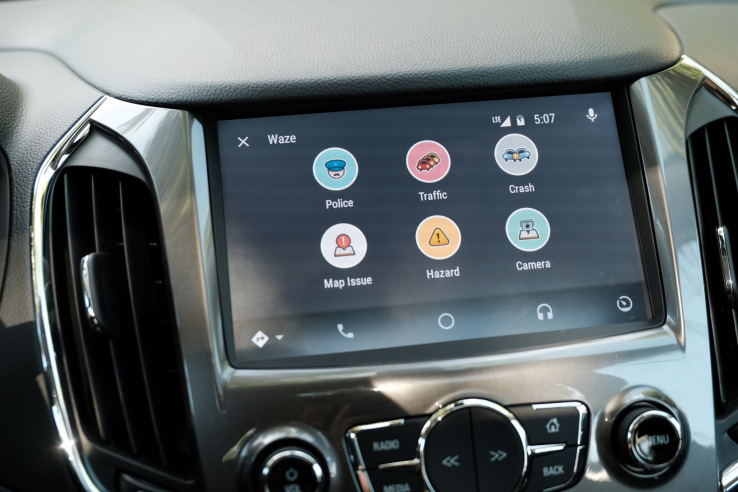

After a beta that kicked off earlier in 2017, crowdsourced navigation app Waze is coming to Android Auto. The Google-owned Waze seemed like a shoe-in for gaining app support for Android’s native in-car mode, but it’s taken a while to bring it to Android Auto – but the months-long beta and the time show that Waze wanted to get the experience right for drivers.
The Waze experience in Android Auto actually brings a lot of the app’s experience to your in-car display, provided you have a vehicle that supports Android Auto like the Chevrolet Cruze I tested it with earlier this week. The interface includes features like accident, delay, police and hazard reporting just like you’ll find in the mobile app, but translated to your car’s infotainment screen with native UI elements that are suited for the larger canvas.
It’s pretty easy to report delay-causing factors using the large, 7-inch center mounted infotainment touchscreen with the Waze UI; the whole thing is built around making this possible in as few steps as possible, with UI elements like icons and menus that use large font, and a minimum of selection options to help minimize distraction. I used the car’s built-in 4G LTE Wi-Fi hotspot for data, but you could just as easily use the data on the phone for map updates and two-way communication with the Waze reporting service.
The Cruze also has a steering wheel mounted voice control button, which you can hold down to ask Waze for directions. This works regardless of where you are in the Android Auto UI, provided you have Waze selected as your navigation app (the default is Maps, but a long press on the navigation icon in Android Auto easily allows you to switch it up). In my experience, voice searching worked well and returned relevant results.
Waze users can also call up their saved home and work addresses, as well as favorited destinations for easy one-touch navigation. You’ll see crowd-sourced reports of potential delays ahead on the live map as you navigate, and you’ll also receive updates about potential alternate routes that could save you time which you can opt-in to on the fly.
The Waze Android Auto port is so complete that you also get its in-app location-based advertising platform, including map pins for local sponsored spots and promoted search results. That’s good news for Waze on the advertiser side, since it opens up to the platform to a broader potential audience of Android Auto users. The one thing it doesn’t offer, however, is the ability to run it on Android Auto running on a smartphone in standalone mode – you’ll need to be plugged into a vehicle or head unit to use Waze in Android Auto itself.
Overall, in my brief usage Waze was a great navigation option on Android Auto, and one that carried over essentially everything about the mobile app that drives its high engagement with its dedicated fan base.

